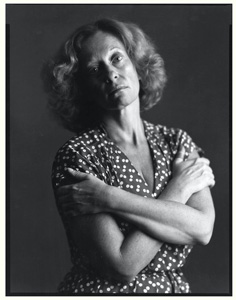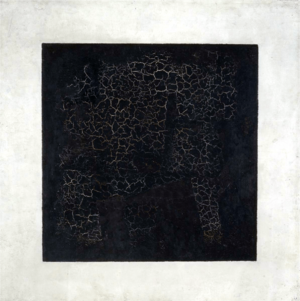Barbara Rose facts for kids
Quick facts for kids
Barbara Rose
|
|
|---|---|

Barbara Rose in 1982 by Timothy Greenfield-Sanders
|
|
| Born |
Barbara Ellen Rose
June 11, 1936 Washington, D.C., U.S.
|
| Died | December 25, 2020 (aged 84) Concord, New Hampshire, U.S.
|
| Education | Barnard College Columbia University |
| Occupation |
|
| Years active | 1963–2020 |
| Spouse(s) |
Richard Du Boff
(m. 1959; div. 1960)
(m. 2009–2020)Jerry Leiber |
| Children | 2 |
Barbara Ellen Rose (born June 11, 1936 – died December 25, 2020) was an important American art historian, art critic, and college professor. She also worked as a curator, which means she helped organize art exhibitions.
Rose was famous for writing about American art from the 1900s. She focused on art styles like minimalism and abstract expressionism. She also had a special interest in Spanish art. Her essay "ABC Art" from 1965 was very important. It helped explain what minimalist art was all about. She also wrote a popular textbook called American Art Since 1900: A Critical History.
Contents
Early Life and Education
Barbara Ellen Rose was born on June 11, 1936, in Washington, D.C.. Her parents were Lillian and Ben Rose. Her father owned a liquor store.
When she was 17, Rose started college at Smith College. After two years, she moved to Barnard College. She earned her first degree, a Bachelor of Arts, in 1957. She then continued her studies at Columbia University. She studied with famous art experts like Meyer Schapiro. She later earned her PhD in art history from Columbia in 1984.
In 1961, she received a special scholarship called a Fulbright. This allowed her to visit Pamplona, Spain. This trip made her very interested in Spanish culture and art. She also met many New York artists through a friend, Michael Chapman. This helped her understand the art scene in New York during the 1960s and 1970s.
Barbara Rose's Career in Art
Barbara Rose's first art writing was published in 1962. A famous art historian, Michael Fried, suggested she start writing as a critic. Rose helped make the term Neo-Dada popular in the early 1960s. She wrote that pop art was a form of "neo-Dada." This helped her become known in the world of American art criticism.
Rose believed that older ways of criticizing art were not enough for new art styles. She wrote a textbook called American Art Since 1900: A Critical History in 1967. This book became very popular in colleges during the 1970s. From 1971 to 1977, she was an art critic for New York magazine. She even won an award in 1972 for an article about an art program for prisoners. She later taught art at a correctional facility.
Curating Art Exhibitions
From 1981 to 1985, Rose was a senior curator at the Museum of Fine Arts, Houston. She organized several important art shows there. These included exhibitions for famous artists like Joan Miró and Fernand Léger.
In 1983, she curated the first major show about the artist Lee Krasner. This exhibition was shown in Houston and at the Museum of Modern Art in New York City. Rose often wrote about Krasner's work. She said Krasner was a very important artist among the Abstract Expressionists. Rose felt that critics had unfairly ignored Krasner. Rose also wrote over twenty books about different artists, many of whom were women. These included Helen Frankenthaler and Nancy Graves.
Teaching Art History
Rose taught art history at several universities. She taught at Sarah Lawrence College starting in 1967. She was also a visiting lecturer at Yale University and Hunter College. She taught at the University of California, Irvine, and the University of California, San Diego.
She also wrote a documentary film in 1977 called North Star: Mark di Suvero. It was about the sculptor Mark di Suvero.
"ABC Art" Essay

In October 1965, Barbara Rose published her famous essay "ABC Art" in Art in America magazine. In this essay, she described the main features of what became known as minimal art. She suggested other names for this art style, like "reductive art."
"ABC Art" explored the different origins of minimalism. She looked at the work of artists like Kazimir Malevich and Marcel Duchamp. She also considered ideas from dance, art criticism, and philosophy. Rose believed that Ad Reinhardt was an early influence on minimalism, but not a minimalist himself.
Rose explained the difference between Malevich's art and Duchamp's art. Malevich searched for a "universal" truth in art. Duchamp, however, questioned all artistic values. Rose argued that minimalist sculpture was best when it was "difficult, hostile, awkward and oversize."
She grouped artists from the 1960s based on their connection to Malevich or Duchamp. Some artists, like Anne Truitt, were closer to Malevich. Others, like Andy Warhol, were closer to Duchamp. She felt that artists like Robert Morris and Donald Judd combined ideas from both Malevich and Duchamp.
Personal Life
Barbara Rose was married four times to three different men. Her first marriage was to Richard Du Boff in 1959, but it ended in divorce a year later. In 1961, she married the artist Frank Stella. They had two children together and divorced in 1969.
Later, she married the songwriter Jerry Leiber in Rome. They lived in Greenwich Village in the US. This marriage also ended in divorce after ten years. Rose remarried Richard Du Boff in 2009.
Barbara Rose passed away on December 25, 2020, from breast cancer. She was under hospice care in Concord, New Hampshire.
Awards and Recognition
Barbara Rose received several awards for her work:
- 1967 and 1970: Frank Jewett Mather Award for Distinguished Art Criticism.
- 1972: Front Page Award for her article "Artists with Convictions."
- 1980: CINE Golden Eagle award for her film Lee Krasner: The Long View.
- 2010: She received the Order of Isabella the Catholic from the Spanish government. This was for her important contributions to art history and Spanish culture.
Selected Publications
Books Authored
- American Painting: The Twentieth Century (1966)
- American Art Since 1900: A Critical History (1967)
- The Golden Age of Dutch Painting (1969)
- Claes Oldenburg (1970)
- Miró in America (1982)
- Léger et l'esprit moderne (1982)
- Lee Krasner: A Retrospective (1983)
- Autocritique: Essays on Art and Anti-Art, 1963–1987 (1988)
Books Edited
- Pavilion (1972)
- Art As Art: The Selected Writings of Ad Reinhardt (1975)
Articles
- "ABC Art" (1965) in Art in America
- "Is it art? Orlan and the transgressive act" (1993) in Art in America
Curated Exhibitions
- 1969: Claes Oldenburg, Museum of Modern Art (New York City)
- 1979: Abstract Painting: The Eighties, Grey Art Gallery, New York University (New York City)
- 1982: Joan Miró, Museum of Fine Arts, Houston (Houston, Texas)
- 1982–1983: Fernand Léger, Musée d'Art Moderne de Paris (Paris); Museum of Fine Arts, Houston (Houston, Texas); Musée Rath (Geneva)
- 1983: Lee Krasner, Museum of Fine Arts, Houston (Houston, Texas); Museum of Modern Art (New York City)
- 1992: Abstract Painting: The '90s, André Emmerich Gallery (New York City)
- 2016: Painting After Postmodernism, Vanderborght Building (Brussels)
Filmography
- 1972: American Art in the 1960s, narrator
- 1972: The New York School, narrator
- 1977: North Star: Mark di Suvero, writer
- 1988: Lee Krasner: The Long View
See also
 In Spanish: Bárbara Rose para niños
In Spanish: Bárbara Rose para niños
- Abstract illusionism
- Experiments in Art and Technology

